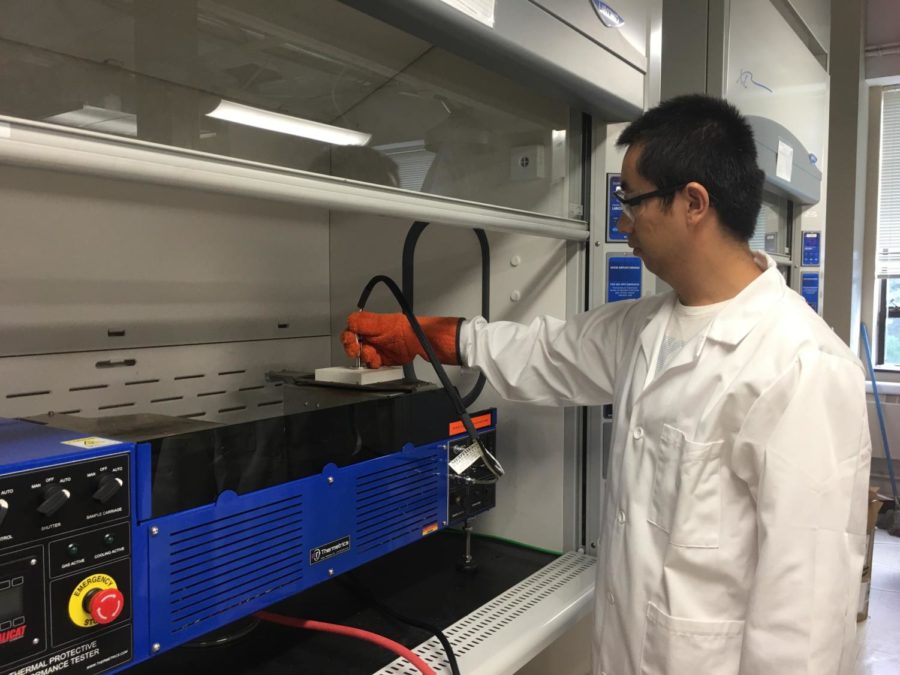An interdisciplinary team researches how to improve chemical protective clothing
Postdoctoral Researcher from AESHM department conducted Thermal Protective Performance test
August 31, 2017
Guowen Song, Noma Scott Lloyd Chair Professor in Textiles and Clothing, Warren Franke, professor in kinesiology department, Xinwei Wang, professor in mechanical engineering department, and some other undergraduate and graduate students formed an interdisciplinary team to create chemical protective clothing that can affect workers in the real life.
Song and his team worked together with professors and research scientists from a variety of disciplines to develop suits that could be beneficial for people, including chemical suits, firefighter gear, or other certain gears.
This chemical protective clothing project was designed to protect the soldier from chemical and biological substances.
“The key issue for Chemical Protective Clothing is the discomfort and even intolerable heat strain with the physical demands of rescuing activities and hot environmental conditions, which limits working duration, reduces performance and can lethal itself,” Song said.
In response to the gaps existed in previous research, Song’s team developed a human-clothing-environment model to predict heat stress under different activity intensity, air gap size, clothing properties, environmental conditions.
“It is urgent to develop a model to simulate thermal physiological responses and heat stress in CPC under hot environments taking account of the fabric properties, air gap sizes, and radiation level,” Song said.
This research project can provide a scientific basis for innovative textile material and garment design development and engineering for enhanced chemical protective ensembles.
“Right now, we try to find a balance between thermal comfort and thermal protection. Human body, clothing and environment are three key points in our study,” said Jie Yang, a postdoctoral researcher from the Apparel, Merchandising and Design program. “We use knowledge from variety of disciplines to increase comfort and design of the clothing.”
In the near future, Wang will make new fibers for functional clothing. They want to see how we can apply these new materials to the fabric, textiles and thermal protection clothing.
“For this project, we try to think about what we can do to help improve the community,” said Hector Angus, a research scientist from kinesiology department talked to the Daily. “We have conducted pilot tests with eight individuals to see preliminary results. Hopefully, we can apply these data to apply for future grant and find out more information to improve our study.”
Wang said they have plans moving forward to explore many other ways to improve upon their current work.
Song’s work involves modeling studies of thermal protective clothing and textile materials, development of devices and test protocols used in the evaluation materials, protective clothing, and analysis of textile and clothing performance.
Song’s team recently tapped for a $317 million project to improve protective clothing for military members.







